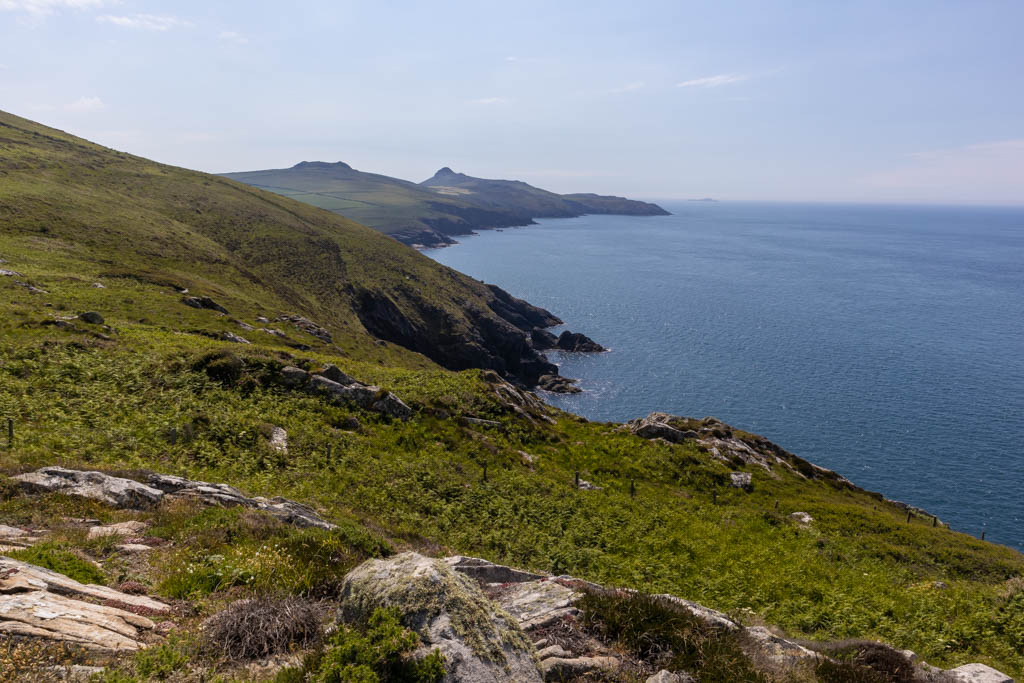We drove into Wales (Cymru in Welsh) on Tuesday under sunny skies. We were heading for Snowdonia, the most mountainous region in the country (and therefore home to the best hikes). My first impressions from that drive were: lush green hills, a lot of rocky terrain, castles everywhere, and gorgeous coastline. Those first impressions were solidified throughout the rest of our time in Wales.
Leading up to our week in Wales, we became aware of a slight timing issue that required some adjustment to our plans. To celebrate the Queen’s Platinum Jubilee, the UK was given a four-day weekend (Thursday through Sunday). This week also coincided with some sort of school holiday, so most children were off the entire week as well. As such, any and all Brits with a love of the outdoors and kids to entertain loaded up their camping gear and headed for Wales (or so it seemed). All the campsites in Snowdonia were fully booked through the weekend, and it seemed as though most of the hikes we were looking at would be crowded with people. We therefore decided to head to Pembrokeshire earlier than planned, but we did still get one good hike in beforehand.
Once again we made use of living in a van by parking close to the trailhead the evening before, so that we could have a relaxed start to the day before setting out. (Basically we just re-allocate any driving time we would’ve done to sleeping time!) The weather was also not great in the morning, but set to clear in the early afternoon, so we were not in a particular rush to get going. We started from Llyn Ogwen, the lake we parked next to, and made our way up into the Glyderau, a mountain range near Mount Snowdon (which was guaranteed to be packed with people as it has a railway up as well as a hike). The start of the hike was fairly easy and busy with families, but once we got to the steeper sections it was far less busy. The hike had a lot of great scrambling, the first bit being the ascent above Llyn Idwal, and the second being the two summits (Glyder Fawr and Glyder Fach). In between was a set of not-so-fun steep switchbacks up a gravelly face, but once we were up on the ridge it was lovely and we ate some lunch before carrying on to the descent.
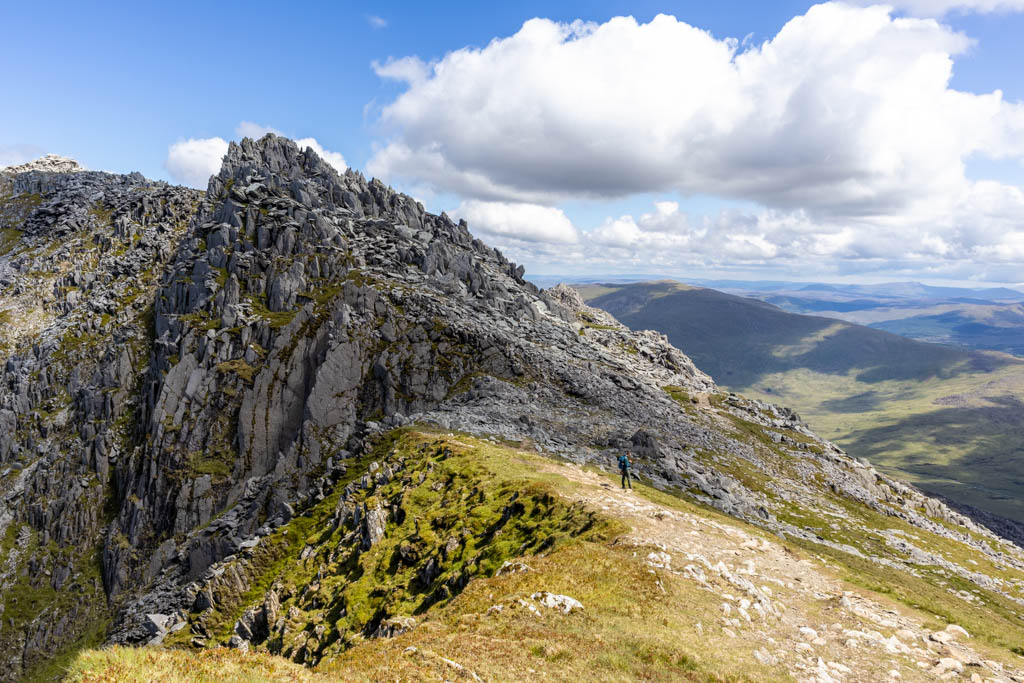 Castle of the Wind (Castell y Gwynt) in the Glyderau
Castle of the Wind (Castell y Gwynt) in the Glyderau
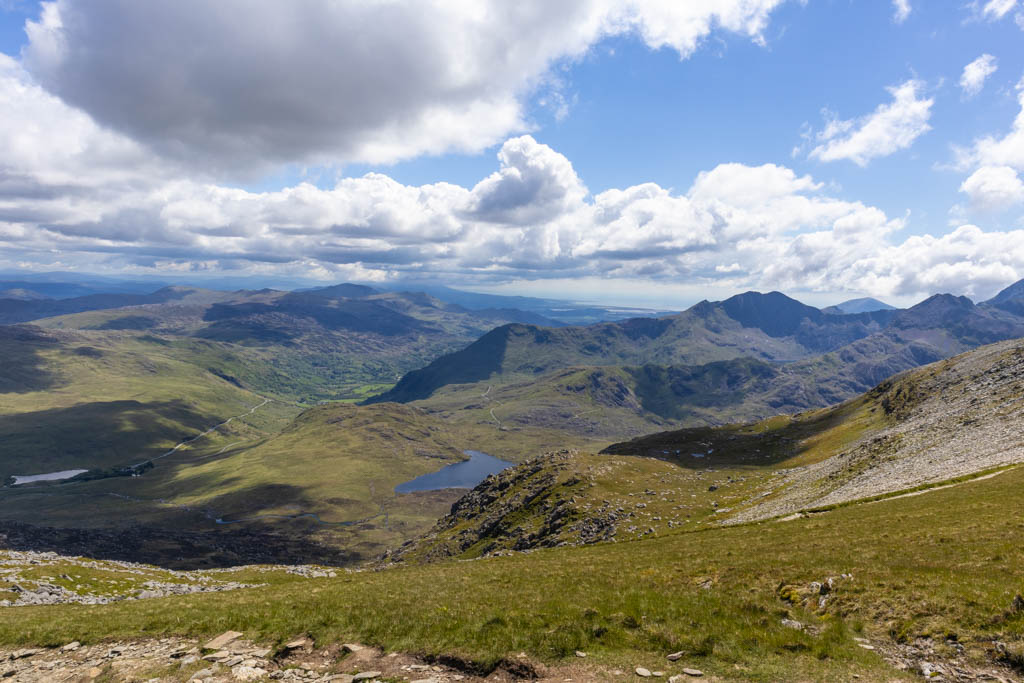 View from Glyder Fach
View from Glyder Fach
That night we stayed at a campsite to enjoy the hot showers and replenish our resources before moving on to Pembrokeshire. We split the drive into two days, because it was not easy driving. In the UK, there are motorways (“M”), “A” roads, and “B” roads, in order of driving ease and preference for drivers of very large vans. While we were technically on an A road the entire time, it traveled through the centre of several small (admittedly super cute) Welsh towns, on one of the biggest holiday weekends of the year. There is a particular road sign in the UK that strikes fear into my heart: the “road narrows” symbol. This sign would pop up as we rolled into town, and combined with the atrocious half-on/half-off parking style I have discussed in previous posts and the massive spike in traffic due to the holiday, we found ourselves in several sticky situations, with queues of cars approaching from both directions but only room for one car-width to go along. Thankfully Jacob is an excellent driver (I am honestly grateful for this every single day) and he managed to squeeze through without a scratch each time. I am not sure how places like Italy compare, but these sorts of driving days are not ones we are keen to repeat.
One stop we made along the way was at Harlech Castle, built by Edward I in the 1280s. Wales is full of castles built by Edward I to establish his military dominance in the region. Harlech is located near the coast of the Irish Sea, and so could be supplied by boats, which came in handy during several sieges. Visitors now can walk all around the high walls and enjoy the view out over the coast. They also had some medieval re-enactments on, complete with a horse! We also enjoyed ice cream cones from a nearby shop, topped with little Welsh flags.
 Ice cream at Harlech Castle (phone focus fail)
Ice cream at Harlech Castle (phone focus fail)
The following day, we arrived in Pembrokeshire. We stayed at a campsite called Hendre Eynon, where Jacob stayed with his family on vacation as a child. Based on his descriptions of British camping in general, this seemed like a perfect example: situated next to a working dairy farm, there is a large grassy field surrounded by hedges with camping pitches side-by-side around the edge of the field. On arrival, we enjoyed the sights, sounds and smells of the farm (maybe not so much that last one), but thankfully the wind shifted for most of the rest of our stay. It’s really a lovely spot, well-situated in the countryside with lots of walks nearby and only a ten-minute bike ride into the city of St David’s. Don’t read too much into the use of “city” here - it’s really a small town, but still legally a city - the smallest in the UK by population.
Our first day in Pembrokeshire was gorgeous and sunny, and we made the most of it. We walked along the Pembrokeshire Coast Path, which follows the clifftops all along the coast. I’m sure by now you are tired of some of my more poetic descriptions of the views we’ve seen, but I was in awe of the scenery along this walk. It is one of the most beautiful places I’ve been in my life. It was certainly reminiscent of the rugged Scottish coast, but here we were able to enjoy it up close, without the gale-force winds of north-west Scotland. The ocean was a rich jewel-tone blue, the cliffs were jagged and imposing, and we were surrounded by fields of small, bright wildflowers. The photos below (and the one at the top of this post) do it very little justice, but hopefully you can see why I was so enamoured with this place.
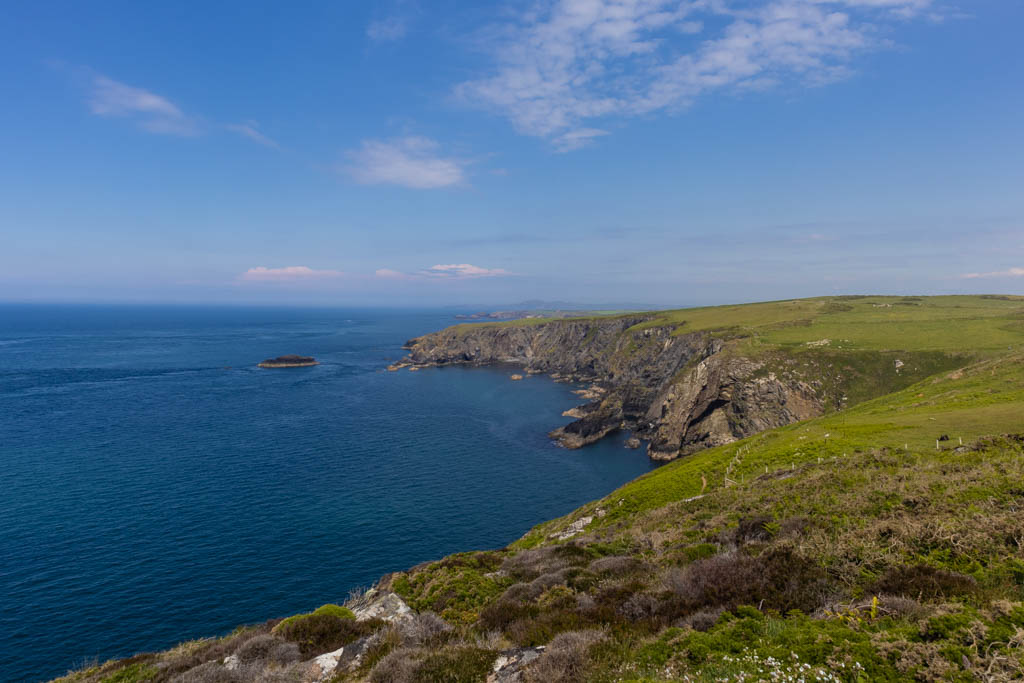 View along the Pembrokeshire Coast Path
View along the Pembrokeshire Coast Path
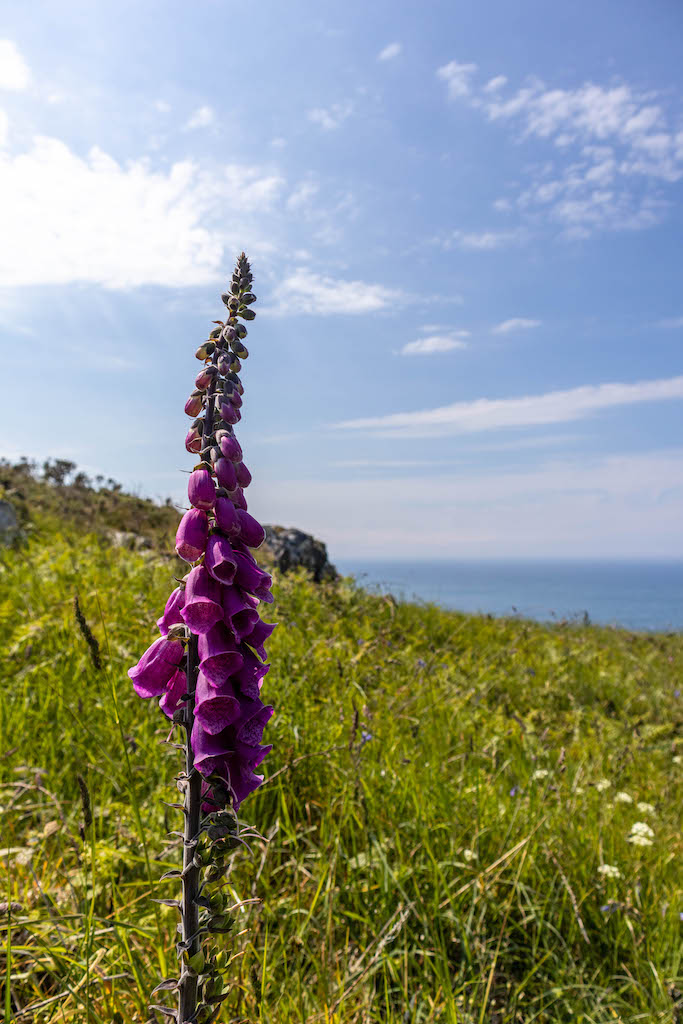 Foxgloves along the Pembrokeshire Coast Path
Foxgloves along the Pembrokeshire Coast Path
I have fond childhood memories of my parents on summer evenings, sitting on lawn chairs in front of our house, soaking up the sun. I think they probably did this most evenings, but they have all coalesced into one or two distinct memories in my mind. They would park their chairs at the front door or in front of the garage to maximize direct sunlight, have a ‘glaasje’ (glass of wine) or (in my dad’s case) a beer, and chat or read a book. It makes me feel very peaceful to recall these times, and as an adult I now savour similar moments. One such moment came after our walk along the cliffs: we brought out our camping chairs, positioned them in the sun, made ourselves a cream tea (tea, plus scones with cream and jam) and read our books. It was the perfect end to a pretty perfect day.
The rest of the weekend was cloudy and a bit rainy, but we still got on our bikes and cycled into town to poke around the shops and see St David’s Cathedral, which is surprisingly large for such a small town (and the presence of which is in fact how the “city” designation was granted). While we were there, I tried Welsh cakes for the first time, and loved them. I also had my first Cornish pasty, which was so, so delicious. A note on this: to me, the word “pasty” is pronounced with the same “a” sound as the letter “a”. And pronounced that way, a pasty is very different from a British delicacy (which is pronounced with more of an “aaaah” sound). So let’s just say that every time we talk about Cornish pasties, I very tentatively attempt a pronunciation and wait for Jacob to either correct me or move the conversation forward. And I will absolutely validate this blog post with him to make sure I haven’t mixed them up again here!
One more little story before I wrap up this post. When I arrived in Britain, I figured my accent would immediately identify me as an exotic, interesting foreigner and attract some attention. (Essentially, the reverse of how I react when meeting a British man in Canada. Now you see how Jacob and I got together!) This has not been the case, however, up until our stay at Hendre Eynon. Finally, I received some of the male attention I had been anticipating! Four boys between the ages of 10-12 asked me whether I was from America (which I hastily corrected), and proceeded to quiz me on what I call “football” (soccer), or “rubbish” (garbage), or “bin” (garbage can), or “tip” (dump). (A lot of the questions focused around garbage for some reason!) They were also keen to show me how they can turn their eyelids inside out, or bend their finger back further than normally possible, or stand with one foot facing backwards. (They were a talented bunch!) It was a fun little interaction, even if I let them down by not having a favourite “football club” (soccer team).
This week, we will be making some final tweaks to the van and our setup before we leave for the continent on Saturday. We’re heading for Norway, with stops in Bruges, Utrecht, Hamburg, Copenhagen and more, so stay tuned!
